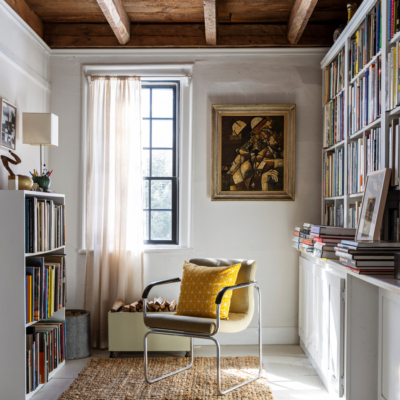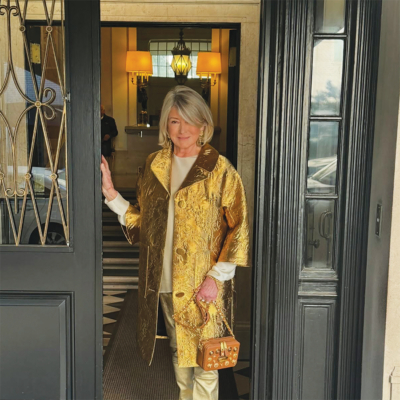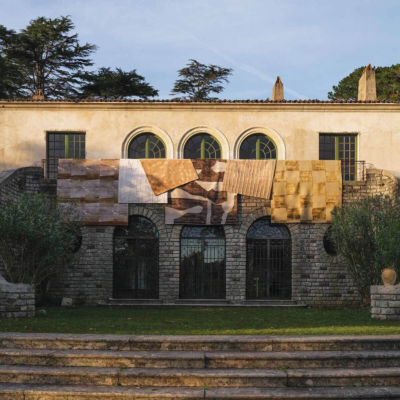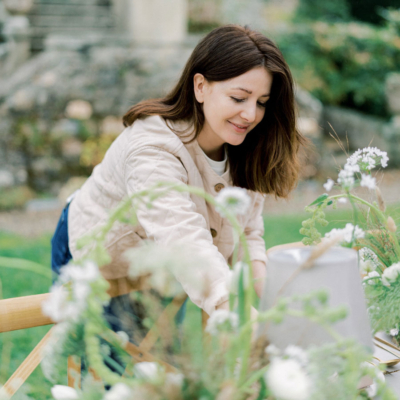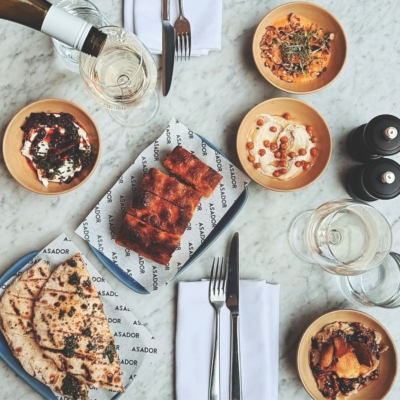Moïra Fowley-Doyle has been writing since she was a small child, including a story about spiders, so she would no longer be fearful of them. Given this, it comes as no surprise that she has become one of Ireland’s leading names in Young Adult fiction, starting with her debut, The Accident Season (2015), and Spellbook of the Lost and Found (2017). Her bestselling books have caught the hearts of literary bloggers and been reported upon by a number of publications on both sides of the Atlantic. She has been shortlisted for the Waterstones Children’s Book Prize and an Irish Book Award in her career so far.
Fowley-Doyle’s new novel, All the Bad Apples, unleashes more of her piercing, evocative style. In many ways, this is her most powerful work to date. Our journey begins on protagonist Deena Rys’s 17th birthday, when she finally comes out to her family. On the same day, her older sister Mandy is seen leaping off a cliff and presumed dead. Deena subsequently learns that the Rys women carry the burden of an ancient curse – that they are all “bad apples.” When Deena starts to receive messages from Mandy, so begins a cross-country journey to find her lost sister, and get to the root of her family’s blighted origins.
Plucking inspiration from her Hiberno-French background, her teenage self, and recent Irish sociopolitical events, Fowley-Doyle has crafted a fantastical feminist tale which gives voice to women who have struggled to be heard. Melinda Salisbury has said of the author, “Moïra’s books are always something so special, but this one even more so than usual; so tender and fierce, full of blessings and curses, like a fiery avenging angel of a book…I am in absolute awe of it.”
Moïra Fowley-Doyle lives in Santry with her two daughters. She is currently working on her fourth novel.
All the Bad Apples (€10.50) is published by Penguin Random House and available from all good bookshops.


On home
I live in Santry with my two daughters and a black cat named November. We’re right beside a park with an excellent playground and a 20-minute walk from my kids’ school. My daily routine starts with a bowl of coffee (à la française) while conducting the chaos of kids/ cat/breakfast/lunches/school bags before we all get on our bikes and cycle to school, usually taking the scenic route through the park. Most days I’ll then go home, do some yoga in the living room, then take yet more coffee into my office and work until it’s time to pick my kids up again. On the days they stay with their dad after school my work day is longer, so I might go for a wander around the Botanic Gardens with a notebook or sit with my tablet, some coffee, and a slice of avocado cake in McMahons. In the afternoon with my kids we stay local: we go to the park or to our local library which is five minutes from the house.
I grew up in Clontarf so a walk through St Anne’s Park is always overlapped with memories. At the moment I’m writing the rose gardens, the tree-lined tracks and the ruins of the Guinness mansion into a story in the same way that I wrote the Clontarf seafront, Bull Island, and the wooden bridge to the statue at Dollymount Strand into All the Bad Apples. They’re all places tied so tightly to my childhood and young adulthood.
On her French side
My mother is French and her side of the family live outside a small town in the south-west, between Bordeaux and Biarritz. I spent three months of every year living with my grandparents there as a child, between the pine forests and the cornfields, and every time I go back it adds another layer to my history with the place. Even now, in my kitchen in Dublin, I can feel the wallpaper in the hall, hear each creak in the stairs, the sound the wooden shutters with their Z shaped beams make in the bedroom I shared with my sister when we swung them open every morning. I can feel the cold flagstones of the back balcony under bare feet when we stepped out to cut fresh herbs for dinner, the way pine needles stuck between our toes in the garden, how down by the wood shed at the edge of the forest our feet would sink into sandy molehills.
My daughters are both bilingual, although one favours English even when she speaks to me. Together, we speak a sort of Frenglish (franglais, we call it). We speak to each other primarily in French, although if they haven’t been around my family in a while they’ll lean more strongly towards English, but there are certain conversations and concepts I can only have through English. For myself, my French is primarily domestic: I’ll occasionally stumble over English words relating to cooking, gardening, housekeeping and childcare. I have a hard time speaking English to babies. But conversations around society, politics or philosophy (and with a four-year-old and a six-year-old, these topics are a lot more common than you’d think), I can only have in English.
On early reading
My parents both read to me since well before I can remember, and kept my favourite books for me to read to my daughters now. As a young child I liked French picture books with wolves eating wayward goats (I can still picture the illustrations, all blood on snow), with foxes chasing escaped pet rabbits, with little girls failing to coerce wolves into vegetarianism. I liked stories with blood and death and sorrow, which is what a lot of French folktales and songs are about. As it turns out, the apples don’t fall far from the tree, because my daughters love the same stories today.
On roots
My family roots are literally that: the force that keeps me standing. I’ve never had anything but unwavering support from my entire family in my writing. When I’m stuck on a plot point and need a sounding board, we’ll all gather around the kitchen table in my parents’ house in Mayo and bounce ideas off each other until I have the whole thing figured out. My sister was the first person ever to read my first novel, before I’d even found an agent, let alone a publisher. She was living in London at the time and read the entire draft on her phone while commuting to work on the Tube. Besides that, mine is a bookish family, a family of musicians and artists, academics and storytellers. They put books in my hands and nurtured my imagination and remained a constant, calming and wholesome presence. Which is probably why I’m so interested in writing family dynamics in my novels; especially dysfunctional ones so different to my own.
On creating
I work in the box room of my house if I amn’t working at the kitchen table. My desk is by the window that looks out onto my road, my squeaky garden gate, but mostly at the tree in front of it. The view is usually blocked by my cat, though, who likes to sit on the windowsill when she isn’t draping herself over my keyboard. My office is small: my chair is wedged between my desk and the spare bed (usually covered in laundry for folding), but I’ve a large cork board of inspirations and reminders on one wall, and a witch’s broomstick hanging on the other. The bookshelves by the door are my favourite because well before I was published I dreamed of having a shelf in my house filled only with different editions of my books. There are now about ten of The Accident Season, five of Spellbook of the Lost and Found, and two of All the Bad Apples. Soon I’m gonna need a second shelf.
The layout of my desk changes from book to book, but it always has my current notebooks between a salt lamp and the computer monitor, a small shelf of treasures and talismans that my kids are obsessed with, my tarot cards (when they aren’t on my bedside table or in my bag), and a small selection of crystals. I wrote a large part of All the Bad Apples with a beautiful sphere of rose quartz given to me by Deirdre Sullivan (which I believe was given to her by Sarah Maria Griffin; witchy Irish YA writers passing the magic along).
On independent bookshops
I can not step a toe into Charlie Byrne’s bookshop in Galway without finding my next favourite read. Their shelves and tables in the main room are so perfectly curated, their kids’ section is a treasure trove, and the mismatched steps and multiple rooms crammed floor to ceiling with books give it the maze-like magical feeling of a bookshop in a story.
On her “To Be Read” pile
I’m currently reading The Priory of the Orange Tree by Samantha Shannon which is gorgeous and lengthy, so my TBR is piling up behind me. In the pile is Frankissstein by Jeanette Winterson, who is one of my favourite authors, and The Wicker Light by Mary Watson, because it’s the sequel to the absolutely beautiful The Wren Hunt. And I’m lucky enough to have been sent an ARC of Erin Morgenstern’s The Starless Sea, which I can’t wait to sink my teeth into.
On escapes
My parents have a house in Mayo, beside a heritage-listed forest, on the banks of Louth Mask. It’s quite close to the middle of nowhere; it’s a twenty minute drive to the nearest shop, we can’t see any neighbours, there is no WiFi and very limited 3G. There are, however, red squirrels and pine martens, foxes, hares and several herds of deer who wander nonchalantly past the veranda and eat my father’s flowers. On clear nights there are more stars than sky. When I bring my daughters, they run through the forest and make treehouses out of ferns and twine. When I go alone I sit with a notebook by the water, or with my tablet and a blanket close to the stove. I’ve spent weeks of every book’s deadline there. It’s where I write best.
On All the Bad Apples
I wanted to write about a family curse, about generational trauma, about how the past repeats itself until truths are spoken and stigma is broken. When I started thinking about what my next book would be, after I’d finished the final draft of Spellbook of the Lost and Found, I knew the characters I wanted to revisit. Deena, Rachel, Mandy and Ida had been knocking about in my head for years. I’d written about half a book when I was seventeen or eighteen about the Rys family, and while none of that story made it into All the Bad Apples, the characters did. I’ve done something similar for every novel I’ve written so far: stolen from a younger me, so that my books always feel a little like a conversation between me and my teenage self. At around the same time that I realised I wanted to write about this family, I understood that, with everything going on in Ireland at the time – it was 2016, so the Commission of Investigation into Mother and Baby Homes had just begun excavating the site of Bon Secours at Tuam and we were marching for choice twice a year while eleven women a day left the country for abortions overseas, without a single scrap of possibility of a referendum to repeal the 8th Amendment – I couldn’t write about anything else.
I threw myself into this book, I dived deep and barely came up to breathe. It felt a little like a necessary madness. Even when it was a mess of a first draft, I was proud of it. I was carried by my editors’ belief in me, by how deep into the telling I got, by how much rage and passion and hope I poured into it. The year or so of research that came before the writing was the hardest part. I’m not a natural researcher and I’ve a very patchy knowledge of Irish history, so I had to start from scratch to write the historical chapters of the book. Researching and reading first-person accounts of mother and baby homes, Magdalene laundries and industrial schools was heart-wrenching, especially as a mother of very young children. My youngest was barely a year old when I started this research; I cried at every single account of mother and baby homes I read. I still can’t read back over those chapters without crying.
On what’s next
I’m currently writing something so new I don’t have the words for it yet. It’s set around Clontarf, and my research so far has mostly involved looking up the migratory patterns of light bellied Brent geese from Bull Island and drawing up astrological charts for houses.
LOVETHEGLOSS.IE?
Sign up to our MAILING LIST now for a roundup of the latest fashion, beauty, interiors and entertaining news from THE GLOSS MAGAZINE’s daily dispatches.






